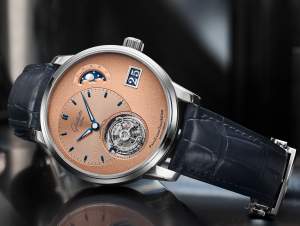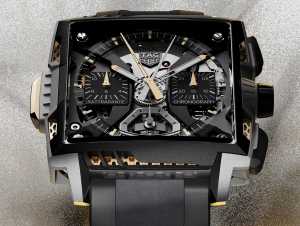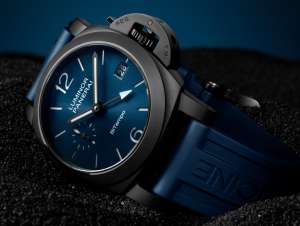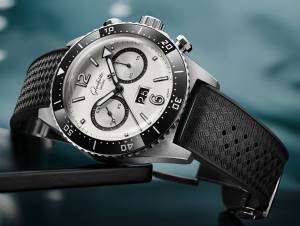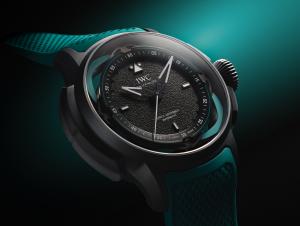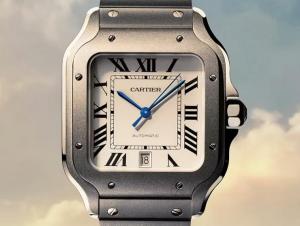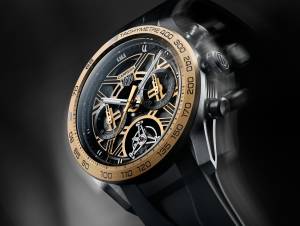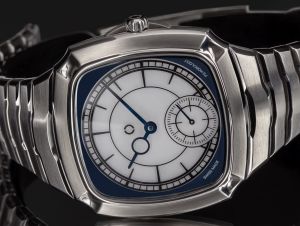PS HorologyPeter Speake is back to the game with the Tsuba!
08 de janeiro de 2025
Peter Speake's PS Horology presents its first creations, the beautiful Tsuba Blue and Tsuba Dong Son.
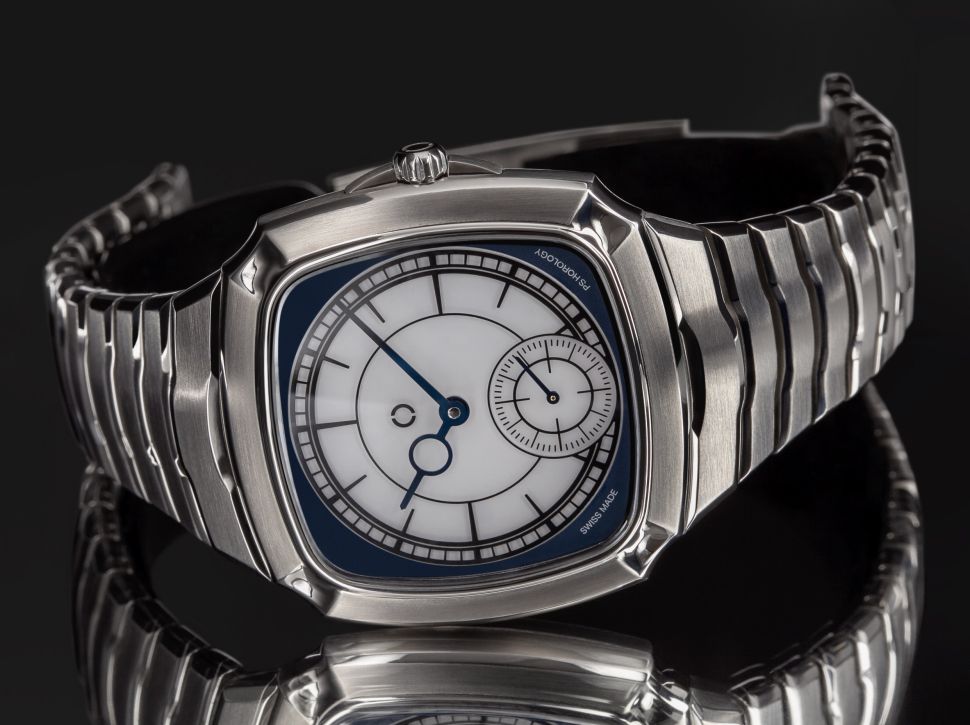
Peter Speake is an independent watchmaker with over 35 years' experience in the watchmaking industry. He trained at Hackney College in London in the mid-eighties before attending the Swiss watchmaking school WOSTEP in Neuchatel and began his career in the early nineties restoring antique and vintage timepieces in Piccadilly, London.

Between 1996 and 2000, he worked for Renaud & Papi in Le Locle, Switzerland, after which he co-founded and developed the Speake-Marin brand in 2002 where he remained the watchmaker until 2017.
Peter spent the next five years at an educational watchmaking platform with access to numerous mainstream commercial brands as well as independent artisanal watch houses to explore their watchmaking by deconstructing, photographing, and demonstrating an extensive array of their timepieces.
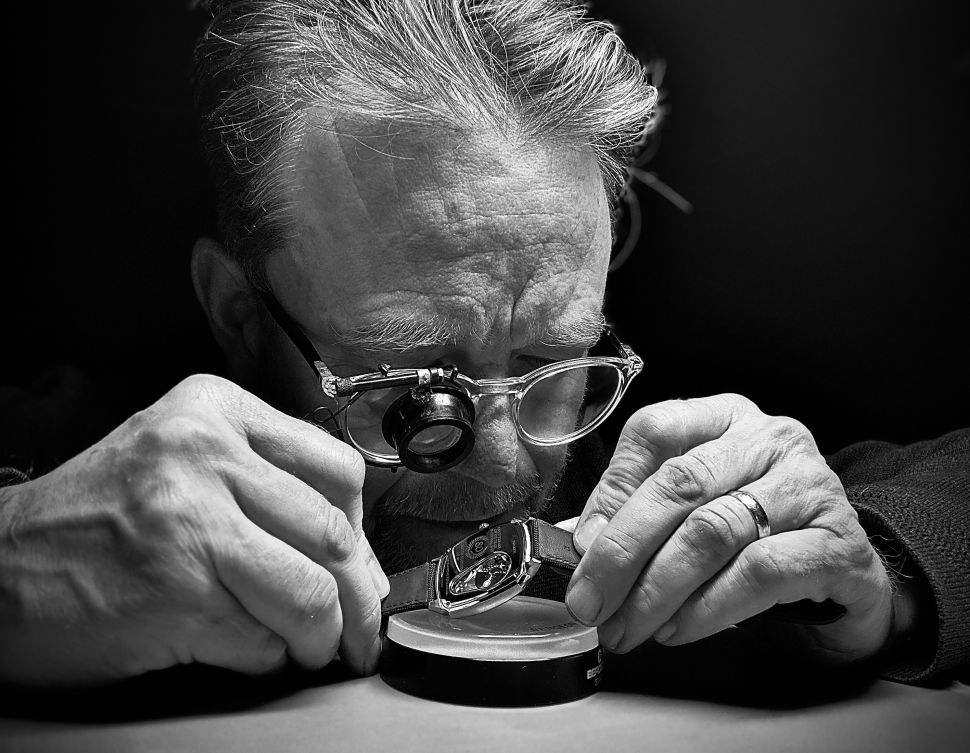
His previously published collaborations include Harry Winston (Ex-centre Tourbillon), Maitres du Temps (Chapter 1), MB&F (Horological machine No.1), The Wostep Watch (For OnlyWatch), Frederique Constant (QP), and Schwartz Etienne (Phoenix).
Peter founded his new brand PS Horology in 2022, and the Tsuba timepieces will be the first of several projects released during 2025. The Tsuba Blue (100 pieces) and Tsuba Dong Son (80 pieces) are the first two models to be made sharing the new Tsuba case design.
The Tsuba Case
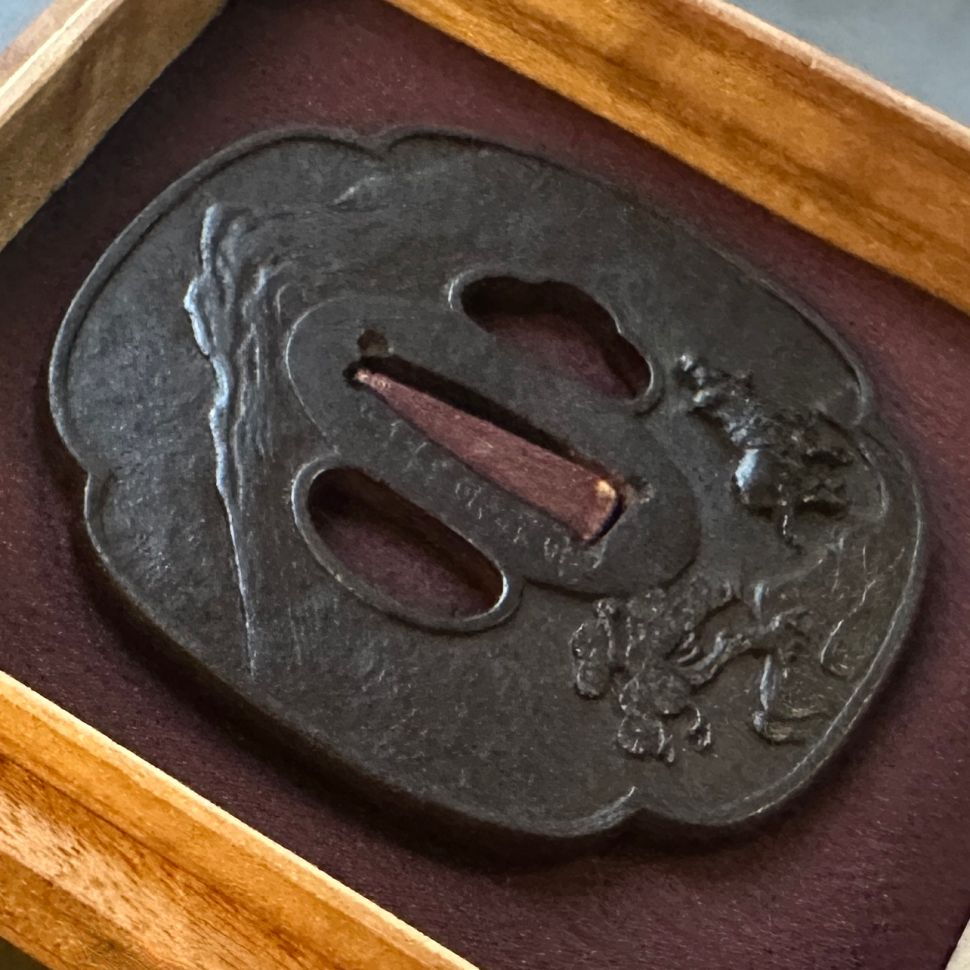
The shape of the case was inspired by the tsuba (an example shown below), a shaped guard at the end of the grip of a Japanese sword that contributes to both the balance of the weapon and the protection of the hand from the blade. During the Edo Period (1603-1868), these guards evolved from simple and practical to highly ornamental and were made by whole dynasties of craftsmen whose only craft was to make tsubas.
Although collectors' items in the modern day, tsubas were often used as heirlooms, passed from one generation to the next, bearing the family crest of Japanese families with Samurai roots, immortalising their lineage.
Tsubas were fashioned in a range of different shapes, and this tsuba-inspired case is a hybrid of the quince shape and the octagonal shape. The quince shape represents a cross-section of a quince fruit symbolising prosperity, while the octagonal shape, representing stability and balance from the number eight, was considered sacred and auspicious in ancient Japan.
The Making of the Tsuba Case
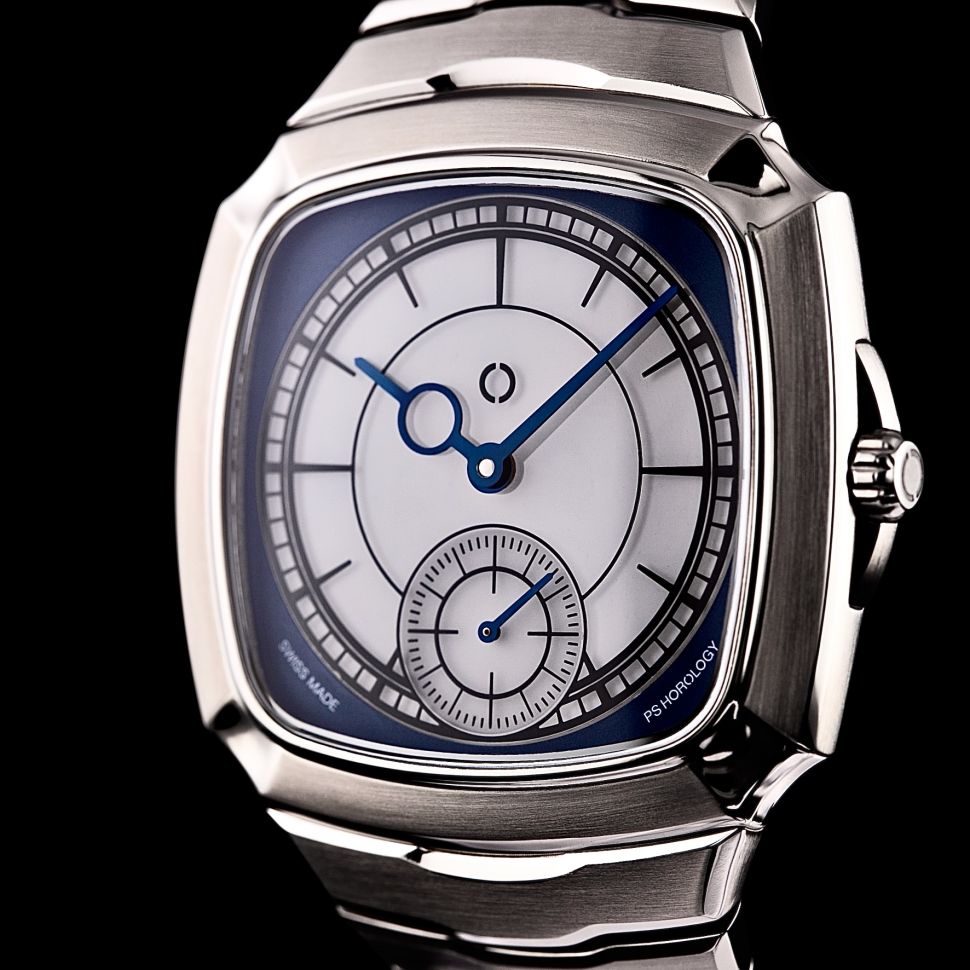
The designer Darren Jones provided the initial guiding concept and drawings. The most challenging element of manufacture was the Tsuba's case, due to its scalloped corners and rounded surfaces which are complex to machine and hand finish. The decoration of the case requires a five-stage finishing process, including brushing of the external surfaces and polishing of the concave surfaces, where a variety of different techniques were used to protect the polished surfaces from being touched during the graining process.
The Tsuba Blue timepiece
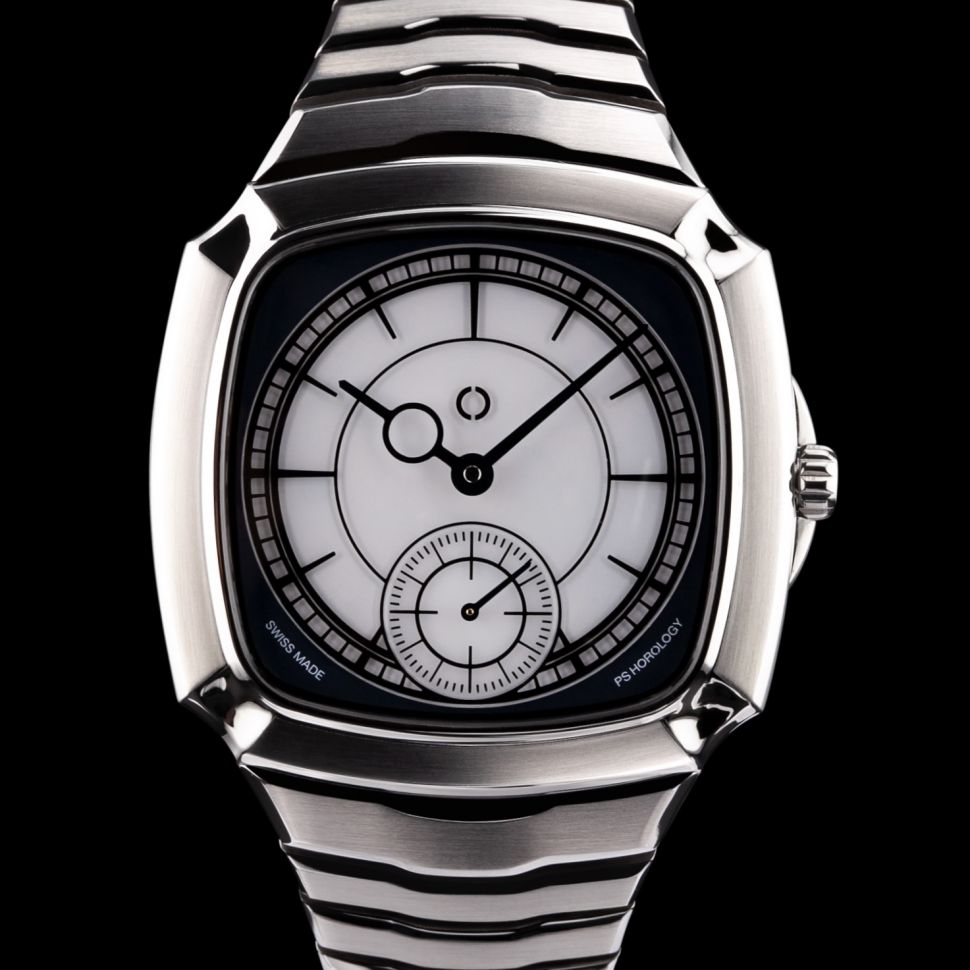
The first Tsuba timepiece is the Tsuba Blue edition, influenced by elements from early vintage wristwatches combined with modern materials and manufacturing techniques. Classic index and hand design is combined with modern techniques of printing on sapphire resulting in a visual depth to the dial details from the shadows produced by the reflection of the indexes through the sapphire on the lacquer on the underside of the sapphire. The blue colour is synonymous with the blued steel traditionally found in vintage and antique watchmaking.
Tsuba Blue technical specification
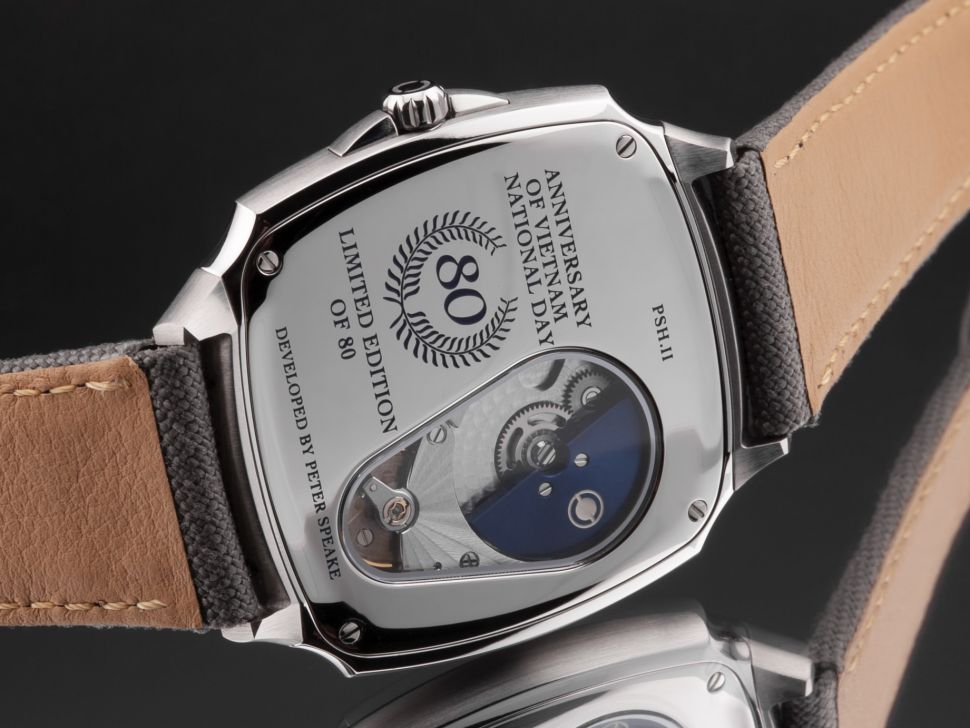
The case is made in Le Locle, Switzerland from 316L stainless steel. Both front and back glasses are made from sapphire and the case is water resistant to three atmospheres. From 3 to 9 o'clock across the case excluding the winding crown the case measures 38.3mm and it is 8.91mm thick.
The movement is made by Vaucher Manufacture in Fleurier, Switzerland, calibre 5401 with micro-rotor automatic. It measures in thickness 2.60 mm and in diameter 30.00 mm (13 ¼"). There are 176 components, 29 synthetic jewels, and a personalised tungsten micro-rotor, turning on a ceramic ball race. The power reserve lasts 48 hours, and the balance wheel is free-sprung. Balance frequency is 3 Hz (21.600 A/h).
The dial centre is made from sapphire and the dial frame from anodised metal. The integrated bracelet has a butterfly deployment buckle.
The Price is CHF 19,500 (excluding tax and shipping), with 30% reservation deposit, and delivery is by August 2025. There will be 100 pieces made in 2025, 99 for purchase by collectors.
The Tsuba Dong Son timepiece
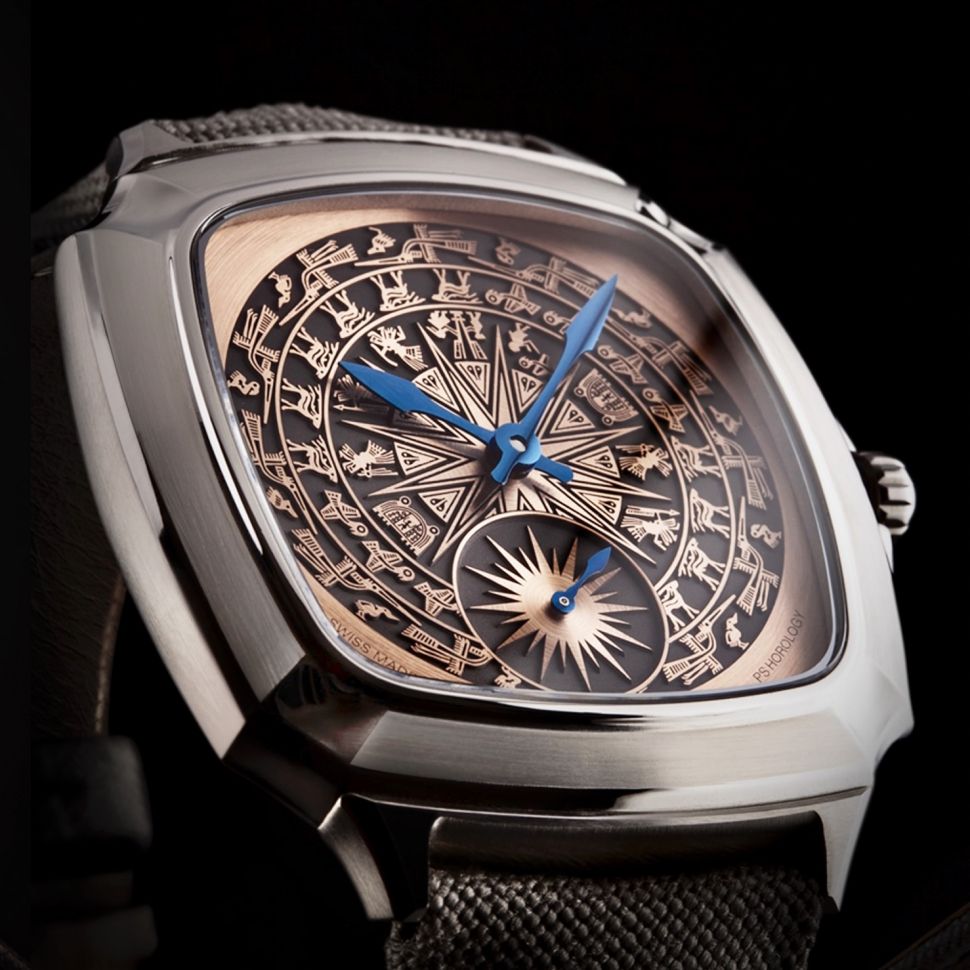
The Tsuba Dong Son reflects a cultural essence of Asia with influences from both Vietnamese and Japanese history and craft. Artistry from these regions is represented by the Tsuba case, inspired by elements found on Japanese swords, and the Dong Son dial that carries symbols found on ancient Vietnamese ceremonial Bronze Age drums.
The timepiece was born from a curiosity about the culture, history, and artistry that Peter experienced during his early travels to Asia, combined with a request to represent this in the form of an original watch.
The Dong Son Dial
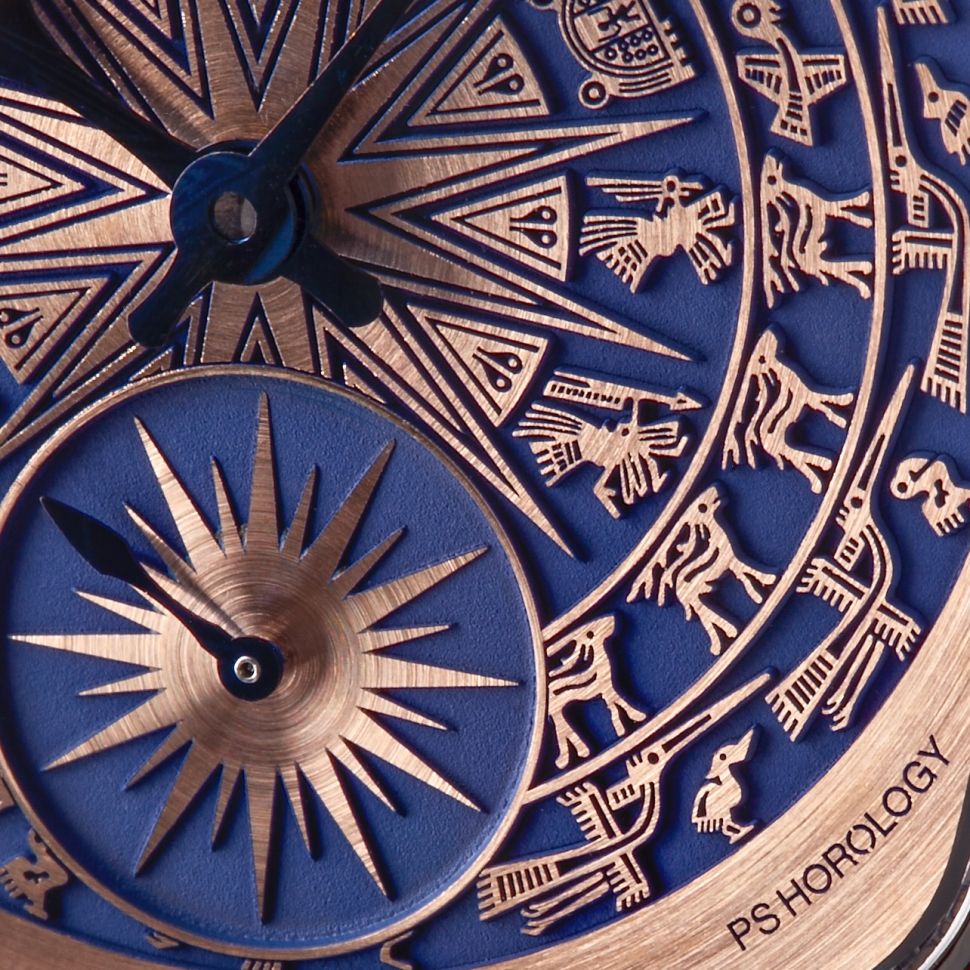
The dial of the timepiece features graphical concentric symbols from Dong Son drums, paired with shaped hands bearing the forms of Dong Son spears and daggers. Discovered by archaeologists in 1924, the Dong Son culture was a Bronze Age civilisation that flourished in northern Vietnam between 1000 BC and the first century AD. Their people were highly skilled bronze casters, who left behind a rich window into their ancient culture in the form of giant ceremonial Dong Son drums that were used for warfare, mourning, festivals and prayers.
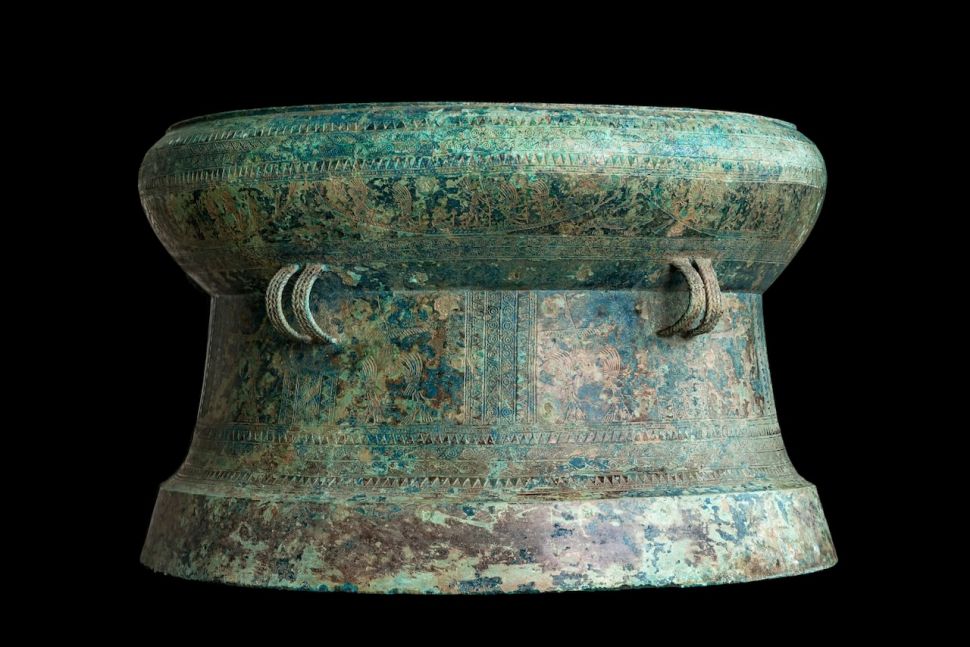
Decorated with intricate geometric patterns, mythical creatures, warriors, and ritual scenes of daily life, these masterpieces have become symbols of Vietnamese culture from over 2000 years ago. The completion of the Tsuba Dong Son timepiece in 2024 marks one hundred years since the discovery of the Dong Son civilisation in 1924, and its launch in 2025 marks the 80th anniversary of the Socialist Republic of Vietnam.
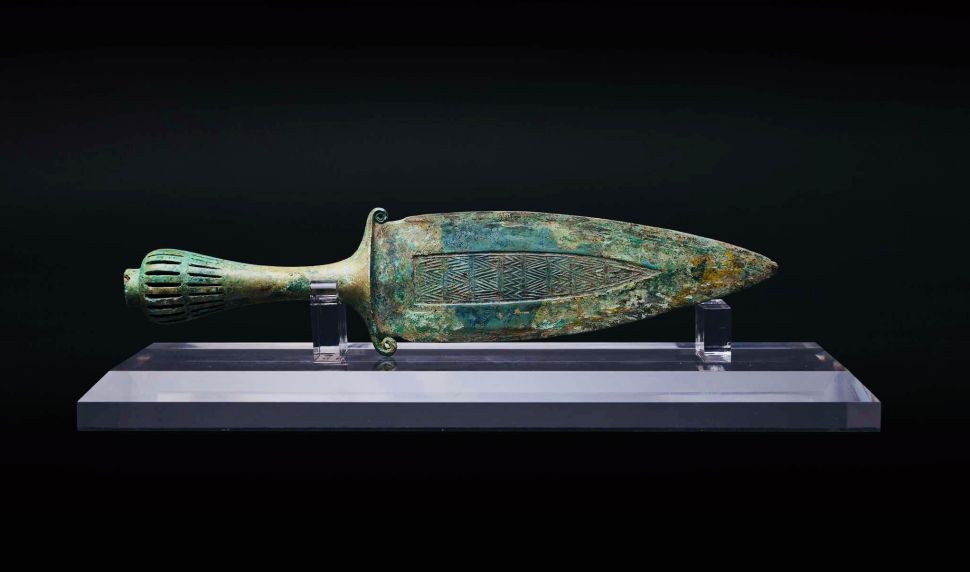
Tsuba Dong Son technical specification
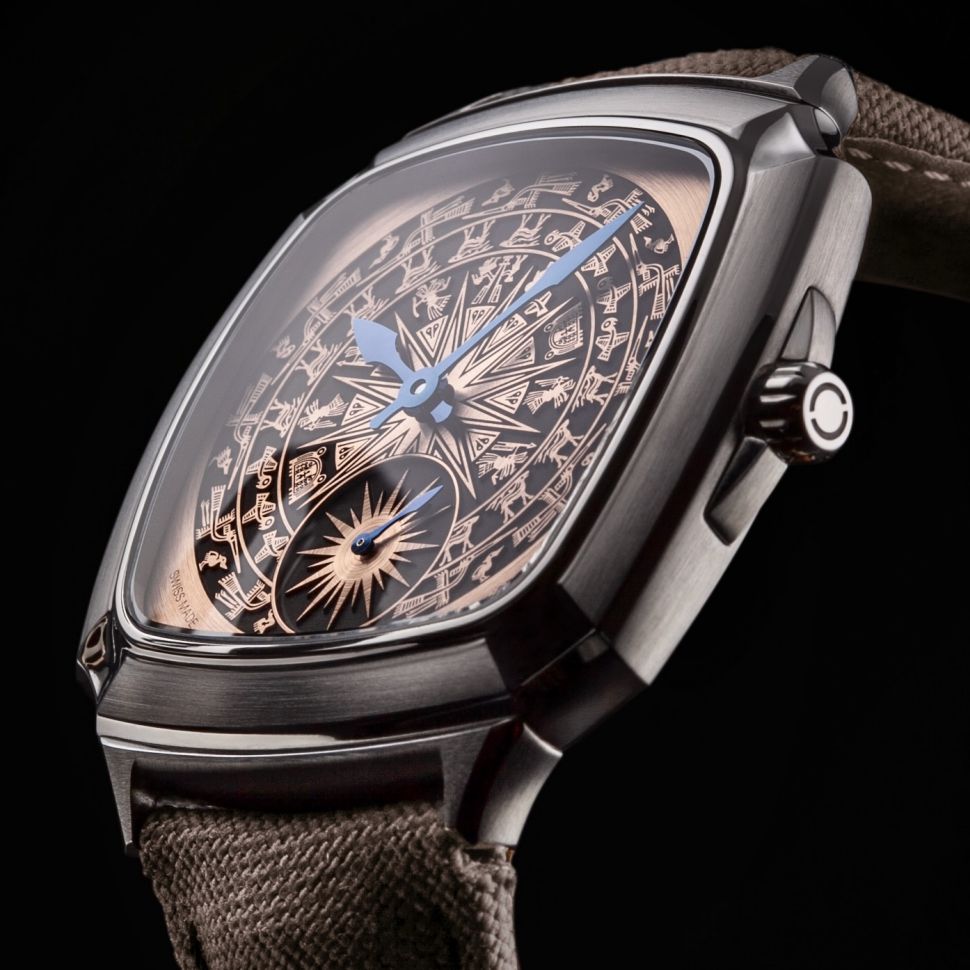
The case is made in Le Locle, Switzerland from 316L stainless steel. Both front and back glasses are made from sapphire and the case is water resistant to three atmospheres. From 3 to 9 o'clock across the case excluding the winding crown the case measures 38.3mm and it is 8.91mm thick.
The movement is made by Vaucher Manufacture in Fleurier, Switzerland, calibre 5401 with micro-rotor automatic. It measures in thickness 2.60 mm and in diameter 30.00 mm (13 ¼"). There are 176 components, 29 synthetic jewels, and a personalised tungsten micro-rotor, turning on a ceramic ball race. The power reserve lasts 48 hours, and the balance wheel is free-sprung. Balance frequency is 3 Hz (21.600 A/h).
The Tsuba Dong Son comes in two colours, ultramarine and slate, the first examples to be delivered on strap with an additional integrated bracelet to follow. The straps are synthetic and humid-resistant and the deployment buckle is 316L stainless steel. The case back is engraved and lacquered and the dial is made from 18K gold and hand finished.
Seen through the sapphire is the rotor and the balance. The movement of the rotor whilst the watch is worn on the wrist powers the timepiece, and the balance is where the power is ultimately dissipated.
For further details concerning pricing and availability for Tsuba Dong Son please contact Vietnam, Miluxe
Additional information
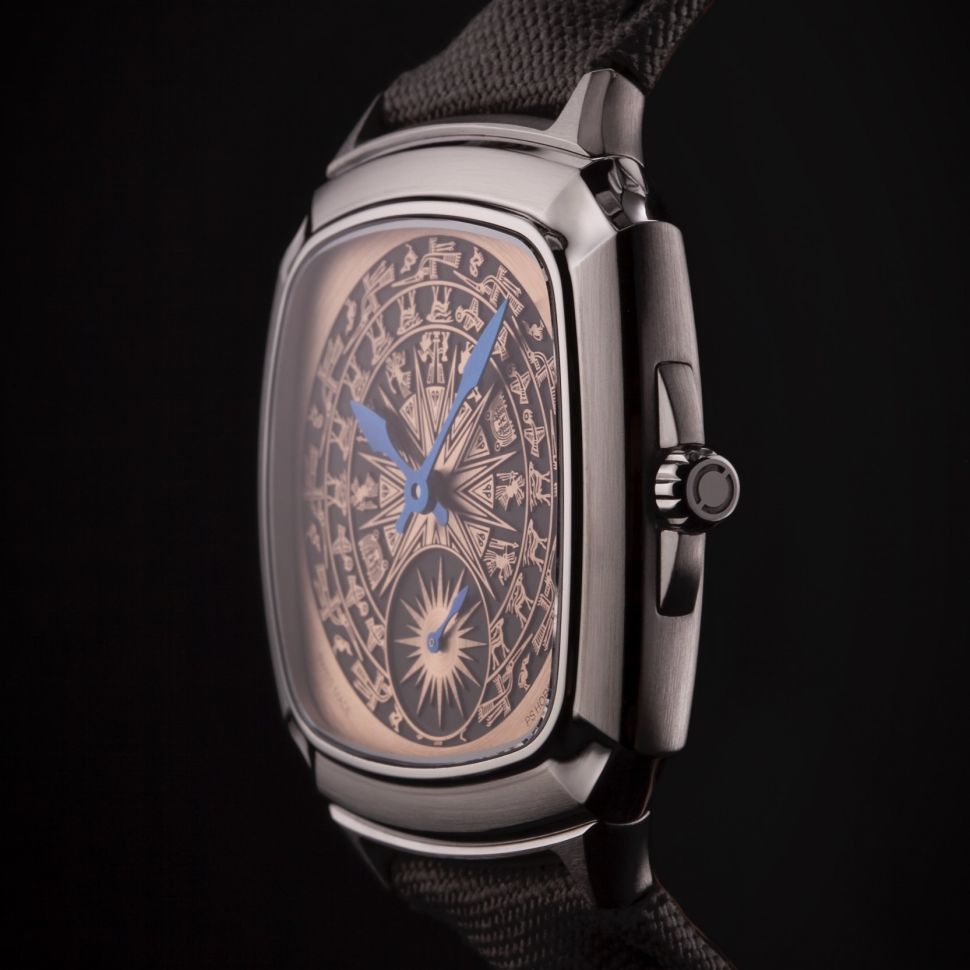
One of the primary elements in the design of the watch was the smooth and ergonomic nature of the case, needing to be slim, comfortable, and able to fit both small medium sized wrists, specifically for clients in the Asian market. The resulting process of construction took over a year before the initial prototypes of the case were made, and a further year before the first series of pieces were complete.
During this period the most complex element was the decoration of the case. To achieve the desired level of finish, the combination of the polished concave corner sections and the straight-grained rounded-flat sections, required revisiting the way in which the case was machined delaying the project by six months.
By the time the definitive metal bracelet is publicly available in mid 2025, it will have gone through three prototype developments experimenting with different geometries of rotation of the links and the integration with the head, determining the way the bracelet is held onto the case. The intention was for comfort as well as creating a unique timepiece that would stand out in a crowded market.
Other complex elements to make were the sapphires. The front sapphire is cushion-shaped and domed with the rear sapphire being flat but the geometry of the rear sapphire linking the tangents of the top circle and lower circle proved more complex to produce than that of the upper sapphire.
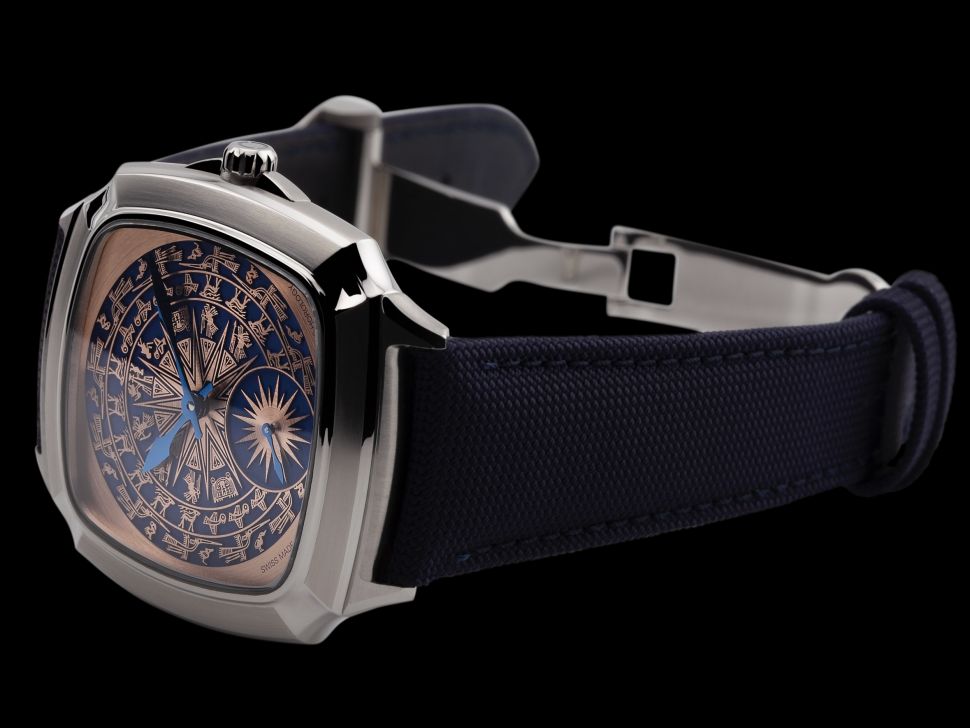
One of the foremost goals, beyond the overall aesthetic of the watch and the quality of the final production was the ergonomics of the design. To have a slim rounded timepiece is necessary to have a slim movement thus the calibre 5401 by Vaucher manufacturer was ideal with under 3mm of thickness, influencing the overall width of the watch.
Historically, Peter made many Dong Son wristwatches but all the symbols for this new model were redesigned and reduced in size (the smallest bird motive being 1.54 mm in height), as well as additional symbols from the original Dong Son drums bring introduced.
One of the most delicate stages in the production of the Dong Son dial is after the symbols have been cut and the coloured PVD added to the surface. The dial is fixed to a jig, placed on a lathe and spun, then the top surface is gently sanded by hand revealing the gold underneath. This provides a contrast for the symbols against the coloured lower surface. This process is extremely delicate as the symbols are very small and made in 18-karat gold.
The micro rotor winding up the mainspring on the base movement is finished with a blue PVD coating. The blue associates with the colour of the hands and is historically linked to much of Peter's early work, which in turn is influenced by vintage wrist and pocket watches where the colour blue is reminiscent of early blued screws and hands.
The brand logo is engraved into the rotor and after the blueing process is finished, is filled manually by hand with a special white lacquer that is resistant to chemicals for when the rotor is cleaned in after-sale service.
The Brand logo

The PS Horology Logo embodies the passage of time as a minimalist graphical stamp. The circle is symbolic of our lifetime experiences, and the vertical gap that bisects it represents the present where new ideas are born. The resulting semicircles created on either side mark our past and future.



















